In the world of interior design, industrial kitchen designs have carved out a unique and compelling niche that speaks to both the minimalist and the creative soul. With their raw materials, open spaces, and utilitarian charm, these designs offer a refreshing departure from the overly polished and pristine kitchens we’ve become accustomed to. This article will take you on a journey through the essentials of industrial kitchen design, revealing how even the most novice decorators can incorporate its distinctive elements into their homes, while seasoned pros can find new inspiration in unexpected places.
For those just beginning their design journey, industrial kitchens provide an ideal playground for experimentation with textures, colors, and materials. You’ll learn how to blend the rugged with the refined, combining elements like exposed brick, metal fixtures, and reclaimed wood to create a space that is both functional and aesthetically pleasing. Meanwhile, experienced decorators will discover innovative ways to refine this style, exploring advanced techniques for integrating industrial elements with modern conveniences and personal touches.
Ultimately, the beauty of industrial kitchen design lies in its adaptability and its encouragement of personal expression within a structured framework. As we dive deeper into this article, you’ll gain practical tips on how to achieve the perfect balance between rustic charm and modern elegance in your kitchen space. Whether you’re starting from scratch or looking to revamp your existing kitchen, you’ll find the insights and inspiration needed to transform this vital part of your home into a masterpiece of industrial design.
Incorporating Raw Material Elements
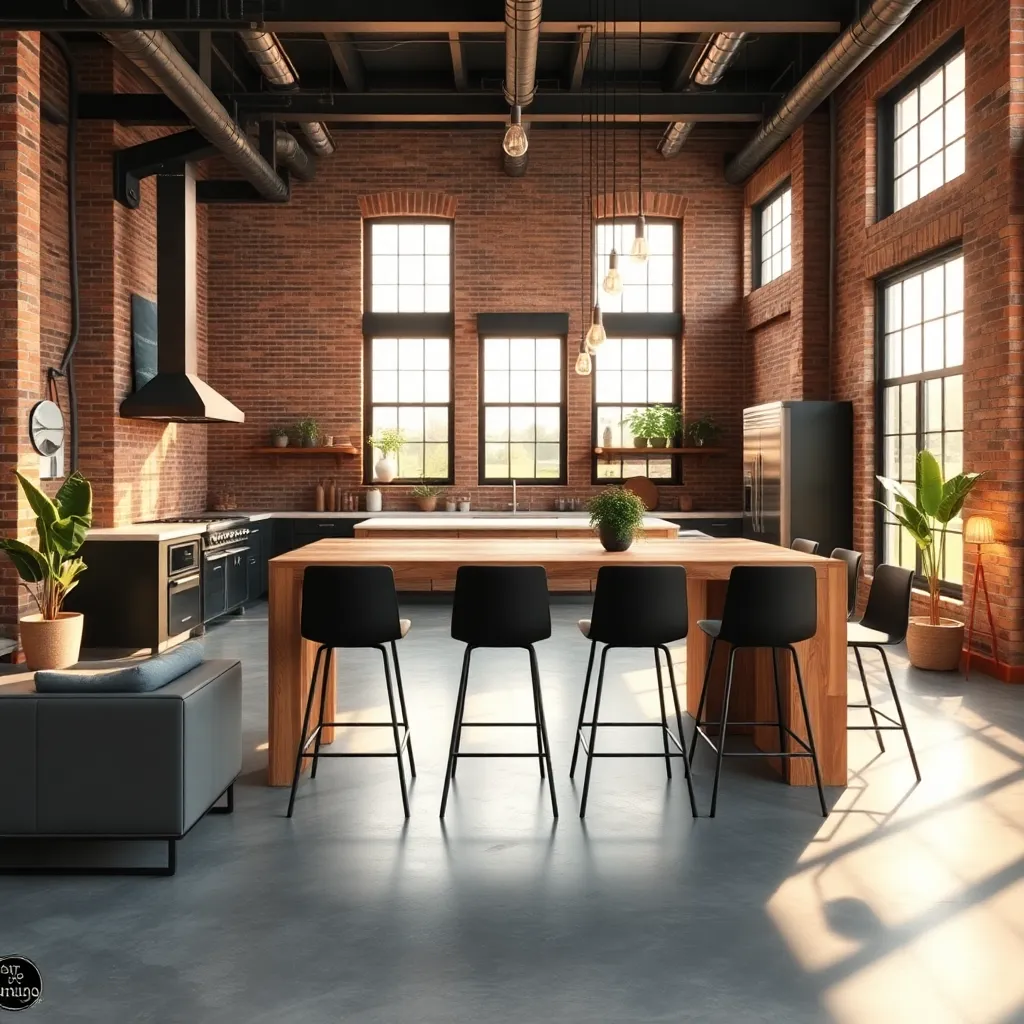
To give your kitchen an authentic industrial feel, start by incorporating exposed brick walls or concrete surfaces. These raw materials create a rugged, unfinished look that forms the backbone of industrial design.
Choose cabinets made from reclaimed wood to add a warm, rustic touch while maintaining the industrial aesthetic. Position these cabinets against a backdrop of stainless steel appliances to balance the warmth of wood with a sleek, modern edge.
For an advanced design touch, consider integrating metal elements such as iron shelving or copper light fixtures. Placing these elements strategically around the kitchen can enhance the industrial vibe without overwhelming the space.
Color plays a vital role in tying together raw material elements in an industrial kitchen. Opt for a palette that includes neutral tones like grey, black, and white, which complement the natural textures of materials like brick and concrete.
Adding a few well-chosen accent colors can also invigorate the space without detracting from its industrial charm. Consider using deep blue or green for accessories or small appliances to add depth and interest.
Choosing Industrial Lighting Fixtures
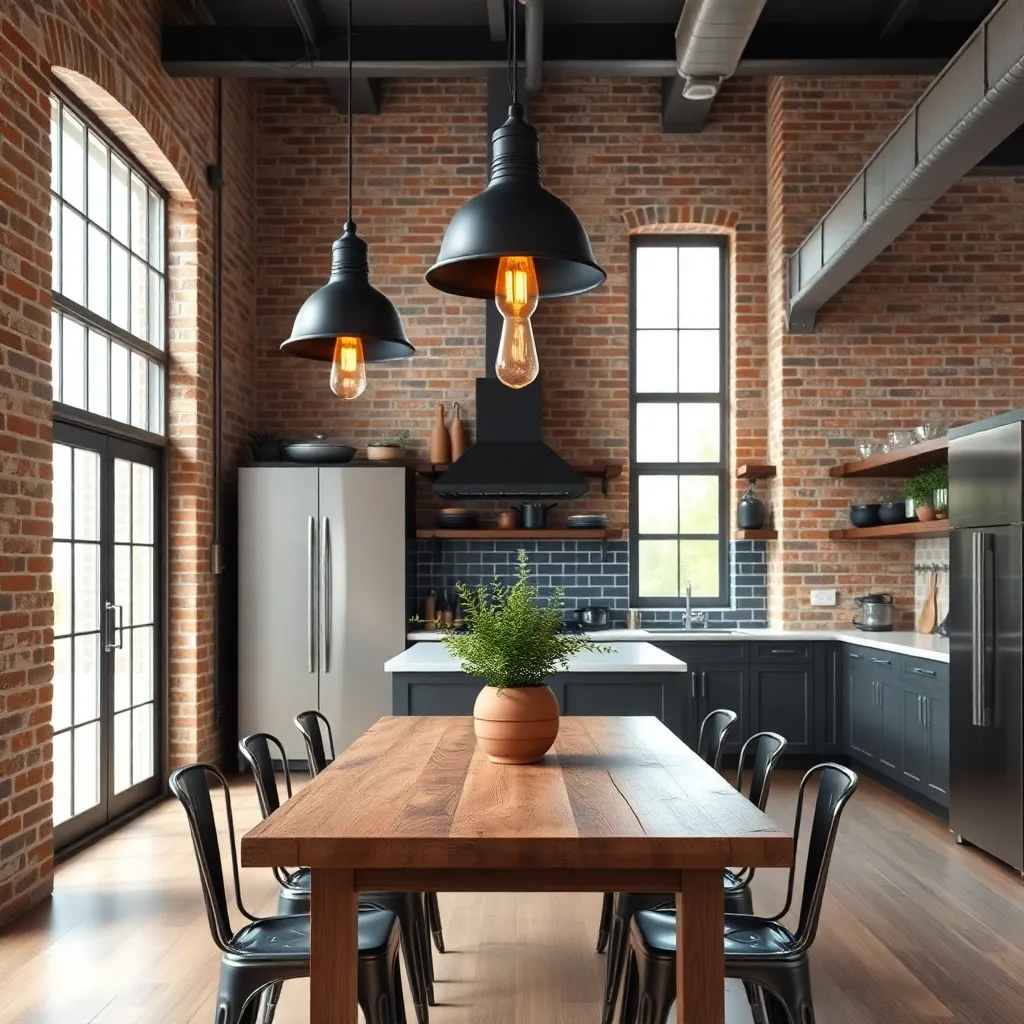
To truly embrace the industrial aesthetic in your kitchen, choose lighting fixtures that highlight the raw appeal of this design style. Consider using exposed bulbs and wiring as a central element in your lighting plan, which adds authenticity and charm to the space.
For a more dramatic impact, mix and match different types of lighting fixtures such as pendants, sconces, and track lighting. This layered approach ensures your kitchen is both well-lit and visually captivating, enhancing the industrial vibe.
Materials play a crucial role in achieving the desired industrial look. Opt for fixtures made from metal, iron, or brushed steel, as they perfectly complement the rugged and unrefined elements typical of industrial design.
Incorporating a color scheme that ties your lighting fixtures with the rest of the kitchen can create a cohesive look. Stick to a palette of neutral tones and metallic finishes to maintain the industrial essence, while allowing for pops of color in accessories or accents.
Placement of your lighting fixtures is just as important as the fixtures themselves. Hang pendant lights over islands or dining areas to focus attention and provide functional lighting, while wall-mounted sconces can illuminate specific workspaces or add ambient lighting.
Optimizing Open Shelving Solutions
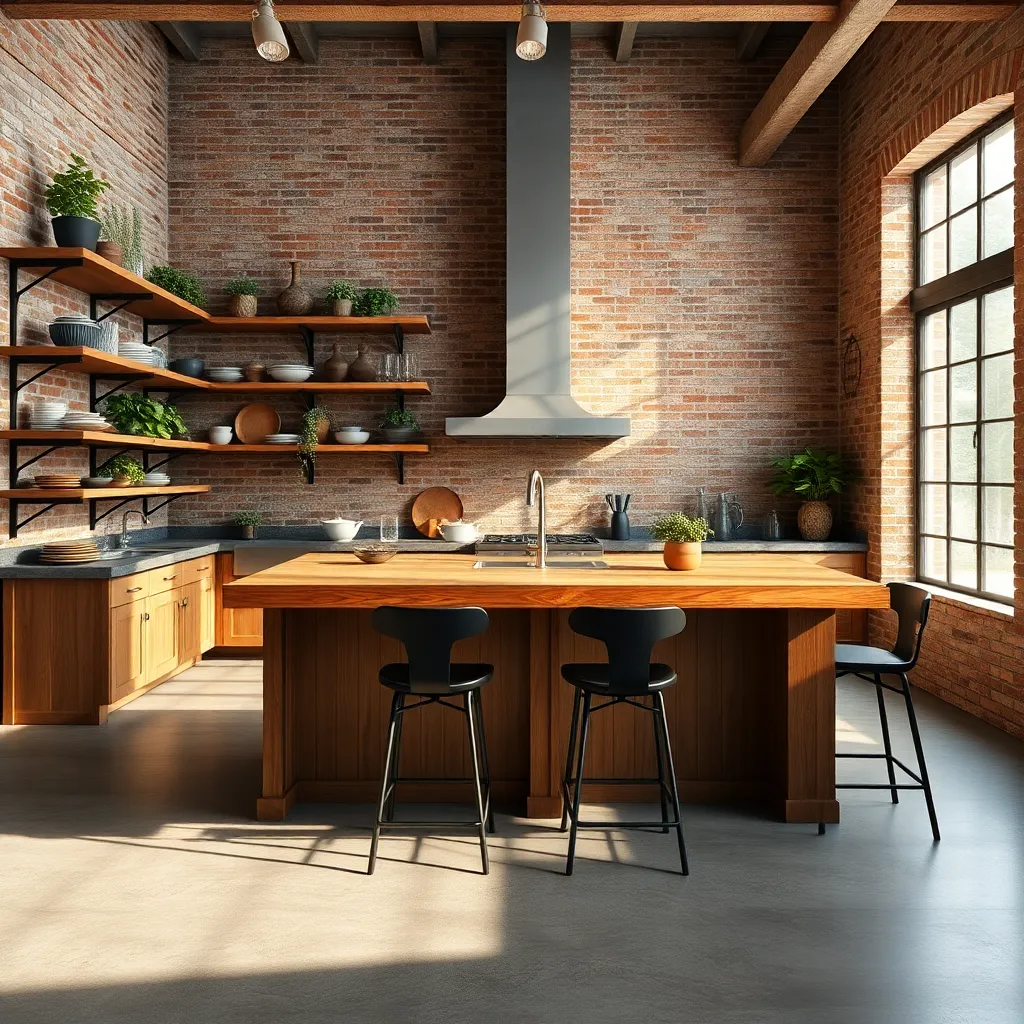
Open shelving is a hallmark of industrial kitchen design, offering both functionality and style. To optimize these shelves, choose materials like raw wood or metal that echo the rugged, utilitarian aesthetic of industrial spaces.
Placement is crucial when deciding where to install open shelving in your kitchen. Consider placing shelves at eye level, which not only enhances accessibility but also turns them into a visual focal point.
Keep your color palette cohesive by selecting shelves that either blend or contrast with your wall color. For instance, dark metal shelves can stand out beautifully against a lighter, neutral wall, adding depth and character.
To maintain a clean look, limit the number of items on each shelf and group them by function or color. Practical items such as dishes, glasses, and canisters can be arranged aesthetically, serving both utility and decor purposes.
Blending Metal and Wood Accents
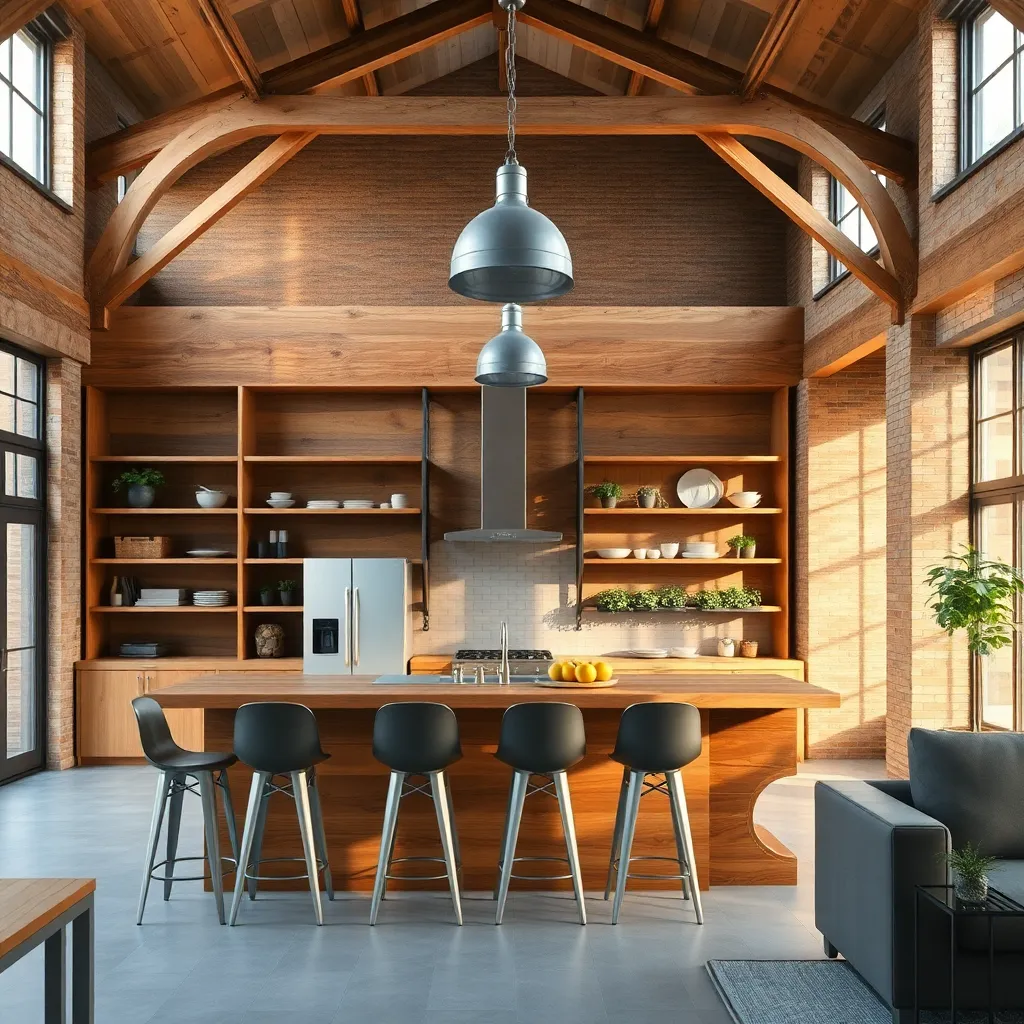
Incorporating a blend of metal and wood accents in your kitchen can create a stunning industrial look that is both warm and modern. Start by choosing a neutral color palette that will allow these materials to stand out without overwhelming the space, such as grays, whites, and blacks with natural wood tones.
Consider using metallic finishes for hardware and fixtures to add a sleek touch to the rustic wood surfaces. For example, a matte black faucet can pair beautifully with reclaimed wood countertops, creating a balanced contrast that is visually appealing.
To achieve a cohesive look, mix different wood tones with complementary metal shades. Use light wooden open shelves to display kitchenware, while opting for industrial-style metal brackets to support them, ensuring durability and style.
For a more advanced design approach, incorporate metal lighting fixtures with wooden elements, such as pendant lights with wooden accents, to create a focal point. Ensure these lights are strategically placed over key areas like the kitchen island or dining area to enhance both functionality and aesthetic appeal.
Integrating Functional Industrial Appliances
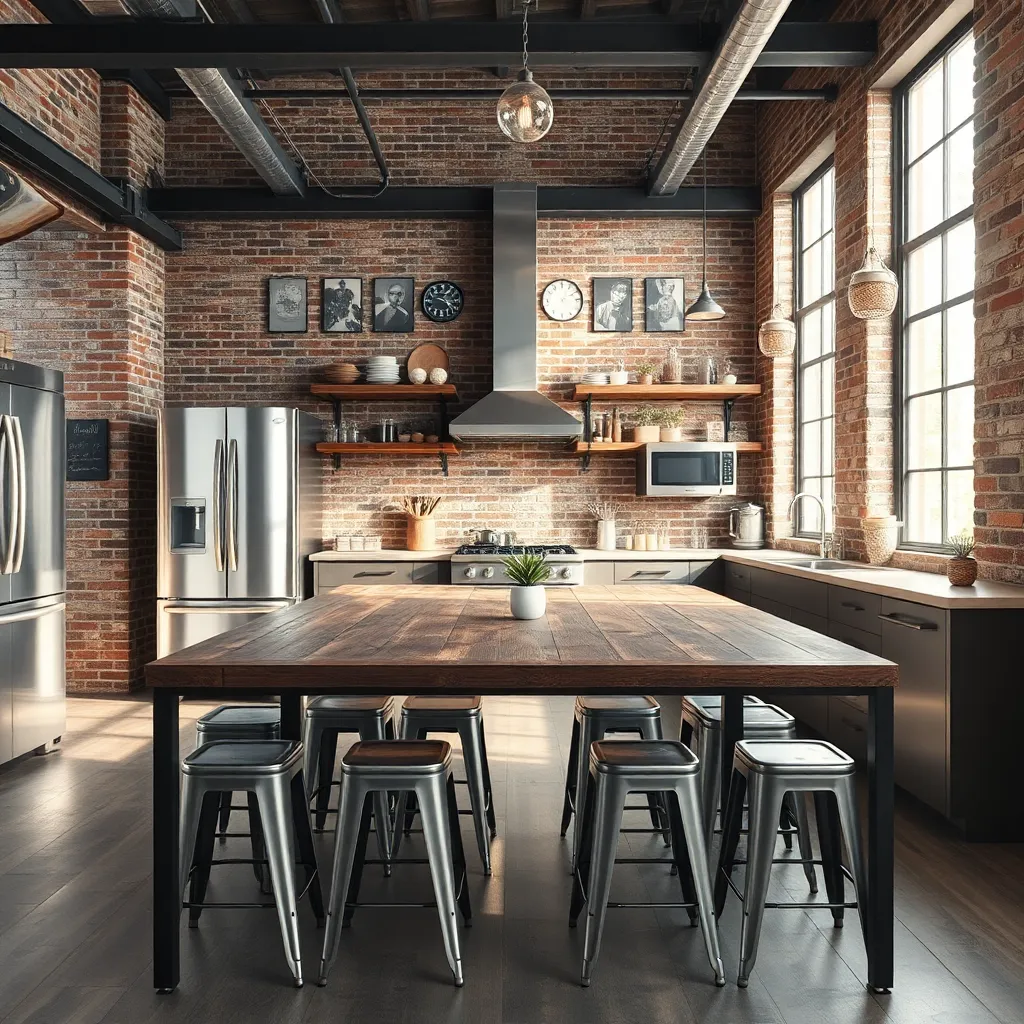
To seamlessly incorporate industrial appliances into your kitchen, focus on selecting stainless steel finishes, which not only complement the industrial aesthetic but also offer durability and ease of maintenance. Consider pairing these appliances with muted, matte cabinetry to create a balanced look that avoids the kitchen feeling overly mechanical.
Strategically position your appliances to maintain a functional workflow, such as aligning your stove, refrigerator, and sink in a triangular layout. This classic kitchen design principle enhances efficiency and ensures that your industrial kitchen remains as practical as it is stylish.
For a more cohesive design, integrate appliances with similar metallic hues and textures to create a unified appearance. Introduce small decorative elements like metal wall clocks or exposed ductwork to tie the room together without overwhelming the space.
Advanced decorators can experiment with contrasting textures by adding a concrete countertop to complement the sleekness of stainless steel appliances. This juxtaposition not only embodies the industrial aesthetic but also adds depth and interest to the space, catering to those who appreciate a more sophisticated touch.
Conclusion: Growing Success with These Plants
In exploring ‘Industrial Kitchen Designs’ and their impact on relationships, we’ve uncovered five key concepts: the importance of shared spaces in fostering connection, the role of collaboration in decision-making, the art of balancing personal and shared tastes, the influence of functional design on harmony, and the celebration of creativity in shared projects. These insights reveal how the physical environment can strengthen the relational bonds we cherish.
As a next step, consider sitting down with your partner or family to discuss how your shared spaces reflect your relationship values. Perhaps there’s an opportunity to redesign a room together, bringing these concepts to life in your home.
Remember, evolving your living space can be a powerful catalyst for deepening your connection. Save or bookmark this article now as a handy guide for your future design projects and relationship growth. It’s always beneficial to have these insights at your fingertips.
Looking ahead, envision a relationship where every corner of your home speaks to your unity and shared dreams. By taking intentional steps today, you are setting the stage for a more harmonious and fulfilling relationship tomorrow.
